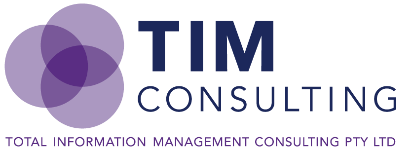Project Management
Business Information Development Services
Business Process Services
Information and Systems Analysis
Training
Business Rules Document Development
Business Rules Document Development is a service that TIM Consulting provides after the completion of the BRDP Workshops. The outcome of this is an S1000D data module, using the BRDocs Schema, that identifies each decision that has been made and the details around the decision. This data module is issued to the project and can be stored in the Common Source DataBase (CSDB). When decisions are updated, this document should be updated by the project.
The data module formalises the decisions for the project and directly relates to the BREX data module. Any updates to the BRDocs data module also means that the BREX data module may also require updates.
BREX Development
BREX Development is a service that TIM Consulting provides after the completion of the BRDP Workshops. The BREX data module documents the decisions that can be programmatically verified by software.
TIM Consulting have pre-developed BREX and Business Rules Document for each Schema that can be used to update the decisions based on what the project has decided.
Business Rules are an integral aspect of an S1000D project. The S1000D Specification identifies a range of decisions, Business Rules Decision Points (BRDPs), that the project should consider for the project implementation.
The Business Rules development provides two outcomes:
- Guidance for project participants (Technical Authors, Project Managers, Engineers, Commerical, Customers)
- Validation file that software uses to verify content is compliant to the decisions
The Business Rules document is a guidance document that is used as the project style guide that the Technical Authors can use to ensure the content is consistent. Technical Authors refer to the style guide during the authoring of content. Errors of structure can still occur. The validation file, called the Business Rules EXchange (BREX), can be used by the Authoring software to programmatically verify that the content is valid to the decisions that have been made. This same document is also used to assist in defining the deliverables for a project, highlighting the methods of data exchange and supports many commerical decisions that are made and agreed.
The TIM Consulting teams experience provides guidance on the development of Business Rules for S1000D. To ensure that projects have the right Business Rules, TIM Consulting facilitates workshops that guide the project through the decisions that have been identified. The workshops that we run are broken into two levels:
- Management Level business rules definition workshop
- Author specific workshop
The Management level business rules workshop are decisions that the management team of the Technical Publication project must decide. Depending on the decisions that are made in this workshop, they will have a direct effect to the Author specific decisions. Many projects will make the decisions for the higher level workshop and document these in a format that the project can use.
The Author specific decisions are decisions that relate to the optional elements and attributes for each Schema. The attendees of this workshop should include technical authors who understand the S1000D elements and attributes. The optional elements and attributes, in many projects, are not clearly defined. This means that individual authors may use different elements and attributes, therefore there is inconsistency in the content. Alternatively, the authors make the decisions of which elements and/or attributes are to be used and, as a team, will implement. The benefit of this is the project may have consistency but has no methods available to verify the consistency. Conducting the Author specific workshop will mean that the project has decisions for all structure and this ensures consistency of data.
On the completion of the workshops, the project will have made decisions on the implementation of S1000D for the project. Each decision that is made is recorded.
There are two ways that BRDPs can be analysed and defined:
- Use the 10 categories defined in the Specification
- use the BRDP Groups concept
The categories method identifies BRDPs in multiple categories. The categories are a list of topics and represent the subject matters address by the business rules.
The BRDPs Groups concept organises the BRDPs into contextual groups where the BRDPs occur only once. The groups concept is not the same as the categories. For the workshop we use the BRDP Groups concept. This allows us to easily identify each BRDP, make the decision and move to the next group.
TIM Consulting documents each decision that is made in the workshops and issue these to the project at the completion. Once the workshops have been completed, the following documents should be prepared:
- Business Rules Document
- Business Rules EXchange (BREX) data module
TIM Consulting Training Calendar
TIM Consulting offers training courses for S1000D Theory and Authoring and ASD STE100.
Contact TIM Consulting for dates before the end of Financial Year
This information will be updated as additional courses are made available.
For TIM Consulting Publicly Scheduled Courses, the following extra conditions apply:
- TIM Consulting reserves the right to cancel the course if the minimum number of 6 students are not met 7 days prior to the scheduled start date of the course.
- If a scheduled course is cancelled, customers will be given the opportunity to attend the next scheduled course or discuss customised training options.
Contact TIM Consulting to discuss your requirements.
ASD STE100
English is the international language of science, technology, and human relations. It is also the language of the aerospace and defence industries.
ASD STE100 is a controlled language that is used to ensure that documentation written in ASD STE100 is understood by all readers, including readers that are non-native English readers.
ASD STE100 is used in technical publications, user manuals, and other documentation that must be clear and short. It is related to industry standards and specifications such as S1000D and ATA iSpec200.
The primary objective of ASD STE100 is to create simplified text for the readers. ASD STE100 is a controlled language, not a simplified version of English.
For authors to write correctly in ASD STE100 they must have a good command of the English language and a good knowledge of the subject that the author is writing about. Authors who want to write proficiently and correctly in STE must have only one point of reference: the specification itself.
Some advantages of writing in ASD STE100 are:
- Clear text. ASD STE100 is written to ensure that documentation is easy to understand.
- Decreased translation work. ASD STE100 is easier to translate, which uses less translation time.
This course is recommended for any authors that must implement ASD STE100 in their technical documentation. The course teaches the ASD STE100 rules necessary to implement ASD STE100. This is a "hands on" course with many practice exercises.
TIM Consulting runs regular training sessions and lists these sessions on the Calendar.
Contact TIM Consulting to discuss your requirements.

Training Overview
TIM Consulting acknowledges the importance of training. Our trainers have extensive experience in industry and enjoy the challenge of passing their knowledge to others.
The focus of the training is:
- S-Series Specifications
- ASD STE100
The S-Series Specifications are a comprehensive framework for managing the support and maintenance of systems throughout the life cycle to ensure the systems remain effective and reliable through the operational life. The S-Series suite have the specifications of:
- S1000D - International specification for technical publications using a common source database
- S2000M - International specification for material management - Integrated data processing
- S3000L - International procedure specification for Logistics Support Analysis (LSA)
- S4000P - International specification for developing and continuously improving preventive maintenance
- S5000F - International specification for in-service data feedback
- S6000T - International guide for training analysis and design
- SX000i - International guide for the use of the S-Series Integrated Product Support (IPS) specifciations.
Access to the S-Series Specifications are available.
ASD STE is a method of controlling the language of the technical documentation to ensure that all users have a clear understanding of the information provided for the maintenance of the equipment.
Access to ASD-STE100 is available.
TIM Consulting runs regular training sessions and lists these sessions on the Calendar.
Contact TIM Consulting to discuss your requirements.
More Articles …
Page 1 of 2

